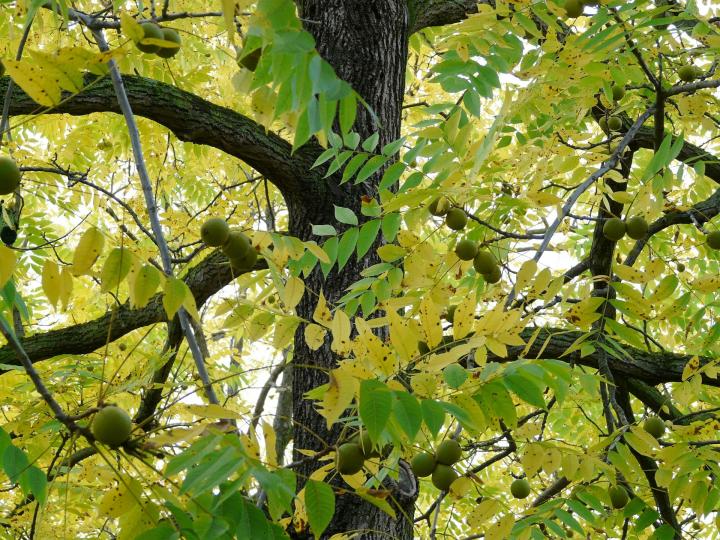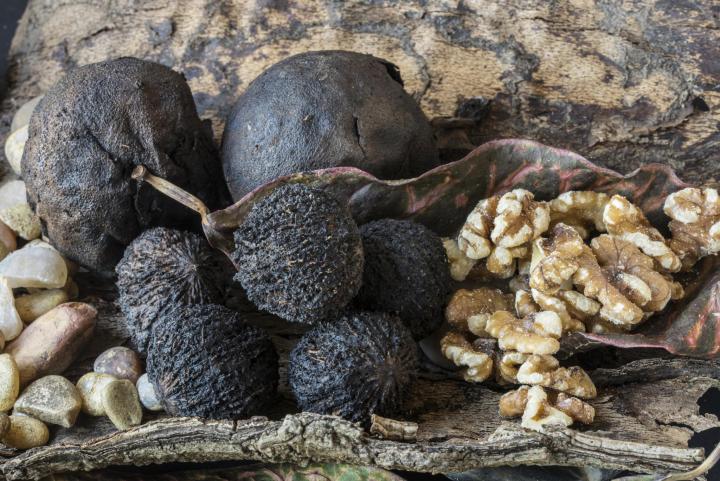
Facts About the Infamous Black Walnut Tree
The Almanac Garden Planner - Use It Free for 7 Days!
Plan your 2025 garden with our award-winning Garden Planner.
ADVERTISEMENT
My Black Walnut, out on the street verge, was a volunteer and I just let it grow before ever I heard about their herbicide tendencies. I can attest that irises have no problem growing profusely around mine. So far, I haven't managed to harvest any nuts, because there are so many squirrels in my neighborhood. Probably one of them was responsible for planting mine in the first place!
When I was young (in Ohio), my family would fill several big burlap bags with black walnuts. Dad would dump them out in the back of our gravel driveway and drive his riding mower over them to knock off the green husks. My sisters and I would walk over them over the next few days so that they could roll around and dry. Then we’d gather the dry nuts in the burlap bags and use them over the next year. If we wanted brownies or a cake with nuts, Mom sent us outside to crack nuts. My sisters and I would sit outside and crack the nuts on concrete blocks with a hammer. Those were the best of times.
when i was a kid many, many years ago in western new york we had black walnut trees all around where we lived. i can still remember my grandmother taught me how to make black walnut bread. boy, was that delicious.
My father had a black walnut tree. We always knew when it was harvest time. His hands got as black as could be! I don't think he ever used gloves to protect them. He really enjoyed the nuts. Thanks for the memories!
After getting the nutmeats from the
shells I toast them for a few minutes, let them cool, and then peel the thin brownish "skin" from the nutmeats. That skin makes the nutmeat taste bitter or astringent. I love these nuts in baked goods!
This article left out a wonderful use for black walnuts. It was mentioned that you should wear gloves to prevent staining your hands while breaking open the husk, but failed to mention that the husks can be used to make a wonderful brown dye. It is one of the most colorfast natural dyes.
Also when it comes to breaking the husks open, I would not advise stomping on them. Smashing them with rocks is more effective and less painful. I had a larger rock with an indent to place them on (and not roll away) and a smaller rock that fit well in my hand to hit them with.
Added bonus: it didn't take much convincing to get my niece and nephew interested in art and science if it meant running around outside and using rocks to smash things. The only hard part was convincing them to wear gloves.
The squirrels have started hoarding the black walnuts under my enclosed porch and the smell is starting to come into the house near the cold air vent. I am going to clean out under porch and put a deep screen around it but is there something I can put on the dirt to neutralize the smell that is safe to use?
Did you try baking soda for the smell ? I just it in my sink for smells
I would like to buy some fresh black walnuts for planting. I don't know of any growing locally to me in southern oregon. Would someone be interested in shipping me some and I pay you? Thanks
I have a black Walnut tree. Maybe you could send me a email of where I could send you a dozen of Fresh Black walnuts falling in September. Just send me the address the last week of August. I live in EL Dorado Arkansas.












